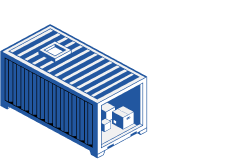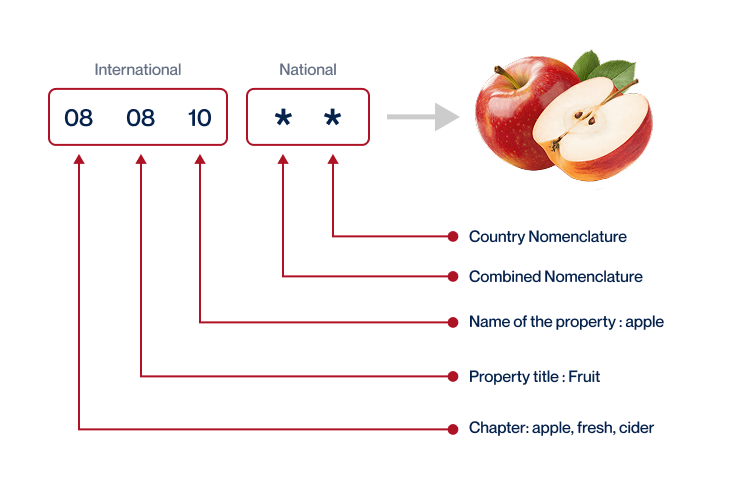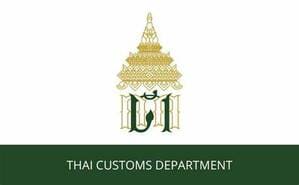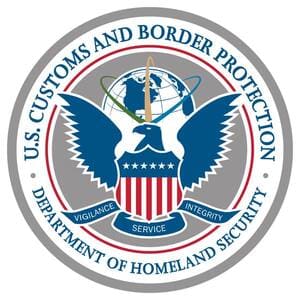FREIGHT THAILAND 🇹🇭 – USA 🇺🇸| Rates – Transit Times – Duties & Taxes
Ever thought your cargo could take a long Thai massage as it travels from Thailand to the USA? Jokes aside, the logistics of shipping goods across the globe can make heads spin with confusion over complex rates, transit times, and customs regulations. In this comprehensive destination guide, we unravel all the secrets, and lay out the various types of freight options available to you - air, ocean, road, and rail. We'll delve deep into the intricacies of customs clearance, duties, taxes, and provide practical advice meticulously tailored for businesses. If the process still feels overwhelming, let DocShipper handle it for you! As an experienced international freight forwarder, we sweat the details to turn your logistics challenges into business success.
Which are the different modes of transportation between Thailand and USA?
Which are the different modes of transportation between Thailand and USA? From spicy curries to the chic streets of New York, shipping from tranquil Thailand to the bustling USA beckons a question- how?! It's like planning a road trip. You don't ride your bike 9,000 miles(you could, but wouldn't)! Instead, you opt for a fast and comfortable jet. Similarly, for smaller goods, air freight zips things across fast. For mammoth items, ocean voyages in container ships are your sturdy SUVs. Each plays its part, like speedy rabbits or steadfast turtles, it boils down to your cargo's needs and rush hours. So, ready for this trans-Pacific journey?
Need help with your shipment?
Need assistance with your shipment? Dont hesitate to contact us even for a simple question. Choose the option that suits you
Live chat with an expert Chat on WhatsApp Free Quote 24hHow can Siam Shipping help you

Sea freight between Thailand and USA
Bridging the gap across the vast Pacific, ocean freight serves as a vital trade artery between Thailand and the USA. Anchoring this connection are bustling ports like Laem Chabang in Thailand and Los Angeles in the USA, connecting key industrial centers and fostering bilateral trade. Believe it: voluminous consignments of toys, car parts, or canned tuna journeying at a turtle’s pace across the ocean can keep costs low!
Yet, it’s not all smooth sailing. Challenges lurk beneath the surface. Ever felt like you’re trying to solve a jigsaw puzzle, but the pieces keep changing shape? That’s what it feels like for many businesses navigating the complexities of ocean shipping. Success lies in knowing the best practices, reading the ocean currents, so to speak. Over the course of the guide, we’ll be your helmsman, demystifying those wave-like regulations, untangling the knot of customs paperwork, helping you plot a course to effortless shipping. Watch this space.
Main shipping ports in Thailand
Laem Chabang Port
Location and Volume:Located in Chonburi Province, this port is essential for trade within the ASEAN region, with a shipping volume of over 7.6 million TEU as of 2019. The port’s vast volume is credited to it being the largest deep-sea port in the country, capable of facilitating large vessels and diverse types of cargo. Key Trading Partners and Strategic Importance: Prominent trading partners include China, Japan, the United States, Singapore and Malaysia. Laem Chabang holds strategic significance as Thailand’s major port, playing a crucial role in international trade. Context for Businesses: If you’re looking to penetrate the ASEAN market, Laem Chabang Port is a considerable component of your logistics strategy, on account of its high connectivity and extensive capacity for various cargo types. Bangkok Port: Situated on the Chao Phraya River in Khlong Toei District, this port represents a significant conduit for shipping, with a trading volume of approximately 1.5 million TEU per year. Key Trading Partners and Strategic Importance: Major trading partners consist of China, Japan, US, Australia, and Indonesia. With its advantageous location, the port serves as a primary direct gateway to the heart of Thailand, thus being beneficial for business operations particularly in Thailand’s capital. Context for Businesses: If penetrating the metropolitan market is your aim, Bangkok Port could significantly enhance your delivery efficiency due to its unparalleled proximity to Bangkok.Map Ta Phut Port
Location and Volume:Located in Rayong, this port specializes in handling large volumes of liquid and gas cargos, processing approximately 183,000 TEU in 2019. Key Trading Partners and Strategic Importance: Significant trading partners include member nations of ASEAN, China, Japan, and South Korea. The port is strategically important due to its niche for liquid and gas cargo handling, making it a vital part of Thailand’s energy industry. Context for Businesses: Map Ta Phut Port could be integral to your logistics strategies if your business deals with large volumes of liquid or gas cargo, or if you are aiming to engage in the Thai energy sector.Main shipping ports in USA
Port of Los Angeles
Location and Volume: Located in San Pedro Bay, the Port of Los Angeles is central to the Pacific Rim economies. It is the leading seaport in North America by container volume and cargo value, managing over 9.2 million TEU. Key Trading Partners and Strategic Importance: This port’s primary trading partners include China, Japan, and South Korea. Its strategic location positions it favorably for trans-Pacific trade, and it’s a vital hub for Pacific Rim economies. Context for Businesses: If your business strategy involves significant trade with Asian markets, the Port of Los Angeles’s comprehensive services and extensive trading network might provide you an edge.Port of Long Beach
Location and Volume: Adjacent to the Port of Los Angeles, the Port of Long Beach is the second busiest container port in the United States. It handles approximately 8.1 million TEU yearly. Key Trading Partners and Strategic Importance: Importantly, its key trading partners are China, Hong Kong, and Japan. The port is a crucial gateway for trans-Pacific trading and a key transporter of a substantial variety of commodities. Context for Businesses: If your commodity mix includes household goods, electronics or petroleum, the Port of Long Beach might be an integral part of your import/export strategy due to its vast assortment of cargo specializations.Port of New York and New Jersey
Location and Volume: Situated on the East Coast, the Port of New York and New Jersey is the busiest port on the Eastern Seaboard. It processes over 7.5 million TEU per year. Key Trading Partners and Strategic Importance: Nations like China, Germany, and India are the main trading partners. It is the key access point for trans-Atlantic trade and a crucial player in the Atlantic trucking network. Context for Businesses: If you’re planning to tap into the European market or require efficient road connectivity to the U.S interior, exploring the possibilities with the Port of New York and New Jersey can be advantageous.Port of Savannah
Location and Volume: Located in Georgia, the Port of Savannah is one of the largest container ports in the United States, handling more than 4.5 million TEU annually. Key Trading Partners and Strategic Importance: This port’s main trading partners are China, Germany, and India. It’s a central hub for agricultural goods and features the largest single-terminal container facility of its kind in North America. Context for Businesses: If you operate in the agricultural sector, the well-equipped Port of Savannah can enhance your logistics, providing streamlined shipping operations and services.Port of Houston
Location and Volume: Nestled in Texas, the Port of Houston plays an essential role in the Gulf Coast, handling approximately 5 million TEU per year. Key Trading Partners and Strategic Importance: The port has strong trading ties with China, Mexico, and Brazil. Primarily, it’s a strategic node in the oil and gas industry owing to the vast refinery networks surrounding the area. Context for Businesses: If you’re in the energy sector, the Port of Houston, with its excellent connectivity to national oil and gas networks, might serve as an ideal logistic route for your enterprise.Port of Seattle
Location and Volume: Located in Washington State, the Port of Seattle is key to the Pacific Northwest’s economy, handling more than 3.5 million TEU annually. Key Trading Partners and Strategic Importance: Major trading partners include China, Japan, and South Korea. It’s an essential gateway to the vast markets of the Pacific Rim, and heavily supports the region’s retail industry. Context for Businesses: If your focus is on the Asian market or you’re associated with the retail industry, the diverse facilities and strategic positioning of the Port of Seattle could be beneficial to your shipping strategy.Should I choose FCL or LCL when shipping between Thailand and USA?
Making the right sea freight selection between Thailand and the USA could be a game-changer for your business. Learn about Full Container Load (FCL) and Less than Container Load (LCL) or consolidation, crucial options that have direct implications on your shipping costs, timelines, and overall success. Choosing between the two is a strategic decision that needs a broad understanding of your specific shipping requirements. Dive in, and let’s break down these options to empower you to make a well-informed choice.

Full container load (FCL)
Definition: FCL, or Full Container Load, is a type of ocean freight where a shipment takes up an entire container. This means the container is exclusively for your goods. When to Use: Opt for FCL shipping when your total cargo volume exceeds 13, 14, or 15 cubic meters. Apart from providing a secured space for your freight, it's cheaper for high-volume shipments - since you’re paying for the whole container, you’re not charged per each unit of cargo. Example: Suppose an electronics manufacturer in Thailand wants to send 300 large television sets to the USA. For such a hefty volume, securing a 20'ft FCL container or even a larger 40'ft container will be the most cost-effective and safest method. The televisions will be packed and sealed in this container at the origin and only unsealed at the final destination. Cost implications: In terms of cost, reaching out for an FCL shipping quote can reveal how it scales with volume. The cost per unit decreases the more you ship, this makes FCL more economical for larger shipments. While upfront costs can be more than LCL, greater cargo volume makes FCL per unit cheaper.

Less container load (LCL)
Definition: Less Than Container Load (LCL) shipping is a method of transporting smaller cargo volumes by sea. Instead of filling a whole container, your freight shares space with other shippers' goods in one container, which could be a more cost-effective and flexible solution. When to Use: LCL freight is an excellent choice when you have modest amounts of cargo, particularly less than 13 to 15 cubic meters (CBM). It's best suited for businesses that prefer meeting specific delivery schedules and not waiting to fill a whole container. Example: Consider a Thai handicraft business intending to explore the US market. They only have 10 CBM of goods ready for initial shipping. Instead of waiting to produce more to fill an entire container, they can use an LCL shipment. This approach gets products into the hands of their US customers swiftly and can kickstart their market penetration. Cost Implications: In LCL, you're billed only for the space you use, making it less expensive than Full Container Load (FCL) for smaller volumes. However, costs can escalate with higher volumes as charges become proportionately higher. Additionally, note that consolidation and deconsolidation charges at both ends could apply.
Hassle-free shipping
Looking to ship from Thailand to the USA and unsure whether to choose consolidation or a full container? Let DocShipper, your trusted freight forwarder, handle it! Our team of ocean freight experts will determine the optimal choice built around factors such as shipment size, budget, and delivery timeline. No more shipping hassle, just straightforward solutions. Ready to streamline your shipping? Contact DocShipper now for a free estimation!
How long does sea freight take between Thailand and USA?
On average, sea freight between Thailand and the United States can take roughly 30 to 45 days, though the exact transit time can vary. Factors to consider include the specific ports used, the weight, and the nature of the goods being shipped. For the most precise and customized quote, we recommend reaching out to a freight forwarder like DocShipper.
Here’s a snapshot of the average transit times between key freight ports in both countries:
Thai Ports U.S. Ports Average Transit Time (days) Laem Chabang Los Angeles 23 Bangkok New York 30 Si Racha Houston 35 Songkhla Savannah 40Remember, this table offers average times, and your shipment’s actual time could vary depending on several factors such as seasonal variations, and customs clearance times.
How much does it cost to ship a container between Thailand and USA?
Estimating ocean freight rates between Thailand and the USA is quite dynamic, serving a wide spectrum, typically ranging from $500 to $2500 per CBM. Various aspects influence this shipping cost, such as points of loading and destination, selected carrier, type of merchandise, and even market temperaments month-to-month. Without a detailed analysis, pinpointing an exact price is a bit tricky. Fret not, our shipping specialists stand at the ready. Tailoring solutions to your unique needs, they provide individualized quotes to secure the most cost-effective route for your cargo, making every cent count. Just reach out and let’s set the sails for your shipping success!
Special transportation services
Out of Gauge (OOG) Container
Definition: An OOG container is specially designed for cargo that surpasses standard container dimensions, in either length, width, or height. As a result, they are perfect for accommodating Out of Gauge cargo that doesn’t fit in regular shipping containers. Suitable for: Large or heavy machinery, big infrastructure components, yacht or boats. Examples: Moving a farming tractor, a wind turbine, or an oversized industrial generator from Thailand to the USA. Why it might be the best choice for you: If your business deals with goods that don’t conform to the usual sizing restrictions of standard containers, OOG containers offer the flexibility and space you need to accomplish shipping safely and securely.
Break Bulk
Definition: Break bulk refers to cargo that is too large to fit into a container and needs to be handled individually. Here, goods are loaded, shipped, and unloaded piece by piece. Suitable for: Large items like machinery, wood, construction materials, or oversized cargo. Examples: Transporting yachts, helicopters, timber logs, or heavy machinery parts. Why it might be the best choice for you: If you’re shipping goods that wouldn’t fit or wouldn’t be efficiently transported even in an OOG container, then Break Bulk offers the maximum flexibility with your loose cargo load.
Dry Bulk
Definition: Dry bulk refers to commodities like coal, grain, or minerals which are transported in large, unpackaged quantities. Suitable for: Mining, agricultural products, or construction materials. Examples: Shipping bulk orders of rice, dried spices, sand, or similar goods. Why it might be the best choice for you: If your enterprise involves large quantities of unpackaged goods, Dry Bulk is your most cost-efficient and convenient option.
Roll-on/Roll-off (Ro-Ro)
Definition: Ro-Ro is a shipping method designed for items that are driven or rolled onto a specifically designed ro-ro vessel. This shipping procedure is common for wheeled items. Suitable for: Vehicles including automobiles, vans, trucks, buses, and even heavy construction machinery. Examples: Shipping entire fleets of new cars for a dealership or moving construction vehicles like bulldozers. Why it might be the best choice for you: If your business makes, sells, or needs to transport large rolling equipment or wheeled vehicles, Ro-Ro simplifies the loading and unloading process and ensures safe transit.
Reefer Containers
Definition: Reefer containers are refrigerated containers, designed to transport temperature-sensitive goods. They maintain a constant temperature, regardless of the weather conditions outside. Suitable for: Perishable goods such as vegetables, fruits, dairy products, and also medical supplies. Examples: Shipping fresh fish from Thailand or moving temperature-sensitive medicines to the USA. Why it might be the best choice for you: If your business involves perishable, temperature-controlled goods, reefer containers ensure your goods reach their destination without the risk of spoilage.
At DocShipper, we understand the complexities of international freight forwarding. With us, you’re not just getting a service provider; you’re gaining a partner that is committed to delivering your goods safely, on time, and within budget. Looking for a free shipping quote from Thailand to the USA in less than 24h? Contact us now!

Air freight between Thailand and USA
Speedy yet reliable – that’s air freight for you when shipping goods from Thailand to the USA. Picture jet planes speeding high-value goods like electronics or pharmaceuticals across the sky, reaching their destination much faster than any ship could. Think of the saved time as money in your pocket. For small shipments, this method is a true champion.
But beware, shippers! Some forget to factor in the finer details, like using the correct weight formula when gauging freight costs. It’s akin to guessing the weight of a package without using a scale – costly inaccuracies are bound to happen. Ensure you’re not footing a higher bill due to simple oversights. We’ll dive deeper into such considerations in the subsequent sections….stay tuned!




Contact Details for Customs Authorities
Thailand Customs

Official name: Customs Department of Thailand Official website: http://www.customs.go.th/
USA Customs

Official name: U.S. Customs and Border Protection (CBP) Official website: https://www.cbp.gov/
Get Started with Siam Shipping
Your first steps with Siam Shipping
Additional logistics services
Warehousing
Storing your goods isn't just about space—it's about finding trusted partners who get the nitty-gritty of variables like temperature control. Imagine shipping Thai orchids: a few degrees off can wilt your business. By prioritizing the conditions your goods need, warehousing can move from a headache to a competitive edge. Get the details on our Warehousing service page.
Packing
Ensuring your goods arrive safely from Thailand to the USA is crucial. With our packaging and repackaging services, we carefully wrap your products to withstand global transit's rigors. Whether it's thai silk or electronic devices, our trustworthy team has got you covered. This personalized approach keeps your items secure throughout their journey. Discover more about our commitment to safety on our dedicated page : Freight Packaging.
Transport Insurance
Transporting goods isn't immune to risks, unlike fire insurance. Cargo Insurance covers potential damage during transit, safeguarding you from unexpected costs. Think about a shipment of electronics rendered useless by humidity during a sea voyage; here, the insurance jumps in to cover the losses. It’s prevention and risk management wrapped into a simple service. More info at: Cargo Insurance.
Household goods shipping
Shipping your prized possessions from Thailand to the USA? We handle fragile or bulky items with the utmost care. Say you've got a delicate Thai silk painting or a hefty teak wood table - we manage it all. Gain peace of mind with our flexibility in larger and sensitive item transportation. More info on our dedicated page: Shipping Personal Belongings.
Procurement in Thailand
Looking to manufacture in Asia or East Europe? Struggling with supplier communication and language barriers? DocShipper simplifies your sourcing journey by identifying reliable suppliers and handling the entire procurement cycle. Think of us as your local partner, smoothing out the process and taking the guesswork out of procurement. Curious? Find out more about how we can make your global sourcing efforts
Quality Control
Shipping from Thailand to the USA? Prioritizing quality inspections at the manufacturing or customization stage can save you major headaches later. Imagine avoiding a full shipment of defective toys or incorrectly labelled skincare products. An early inspection, like the services offered by Siam Shipping, ensures your goods meet all required standards before they're loaded onto the transport.
Conformité des produits aux normes
Confused about meeting destination-specific regulations? We got you covered. Our reliable Product Compliance Services are tailored to ensure your goods meet all criteria for smooth sailing. From obtaining necessary certification via laboratory testing to ensuring optimal compliance standards, we alleviate the stress out of the import-export game.





